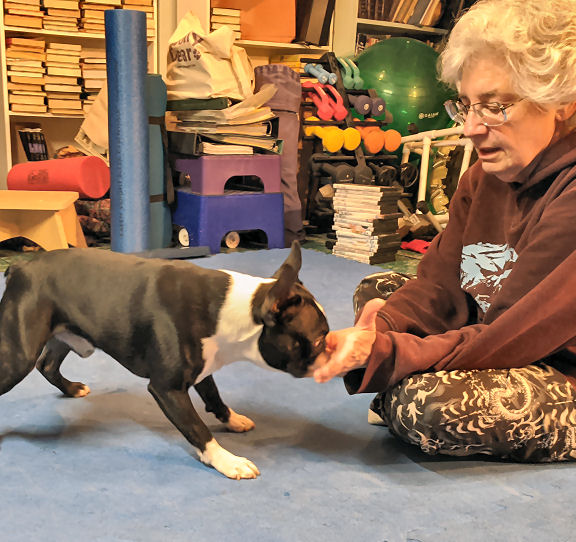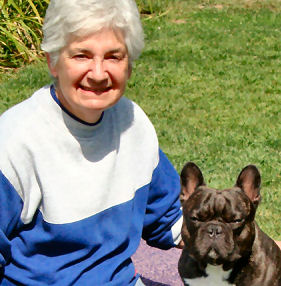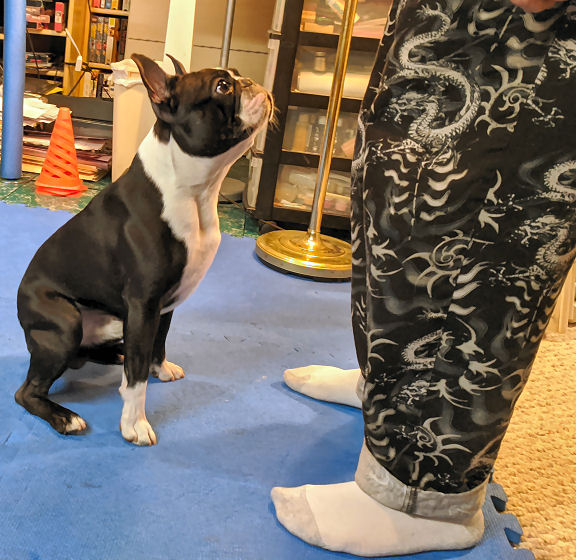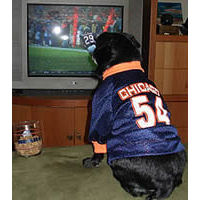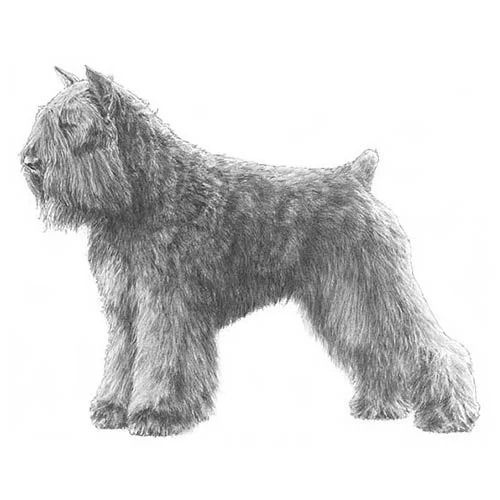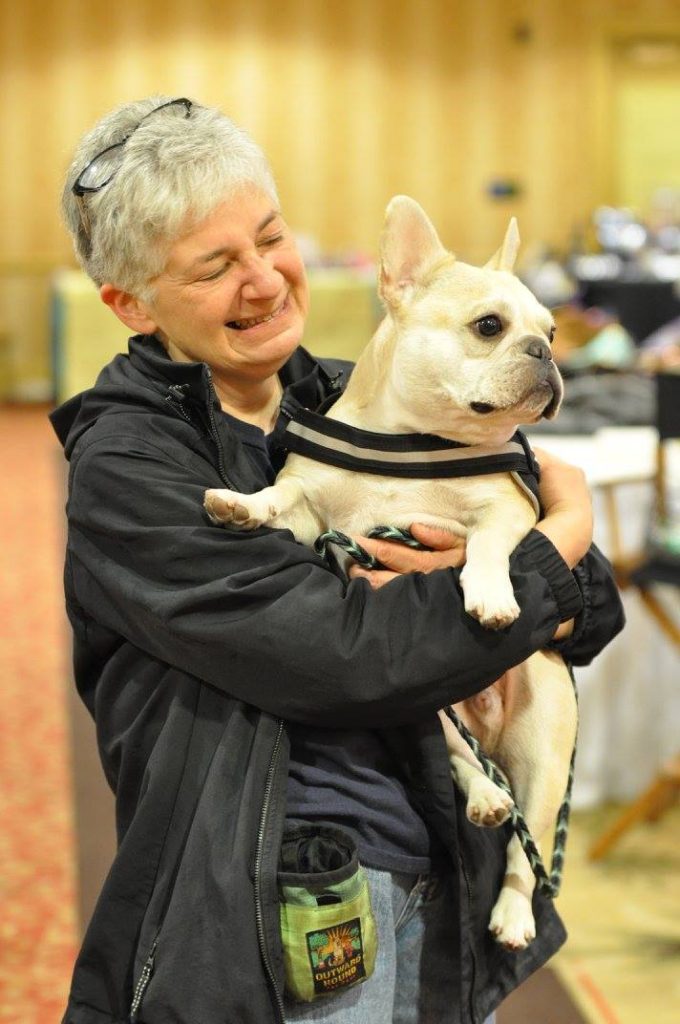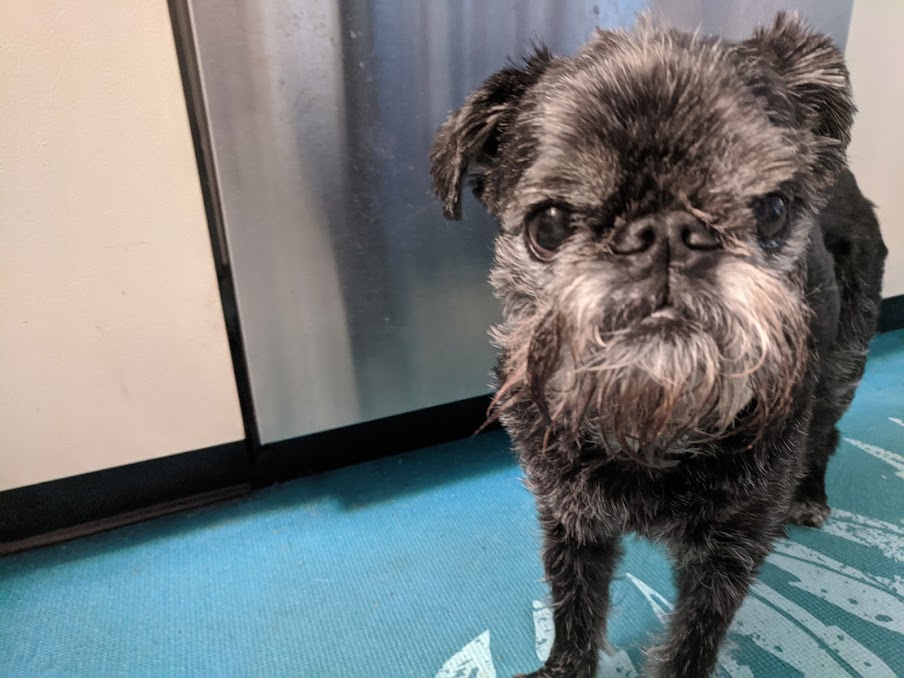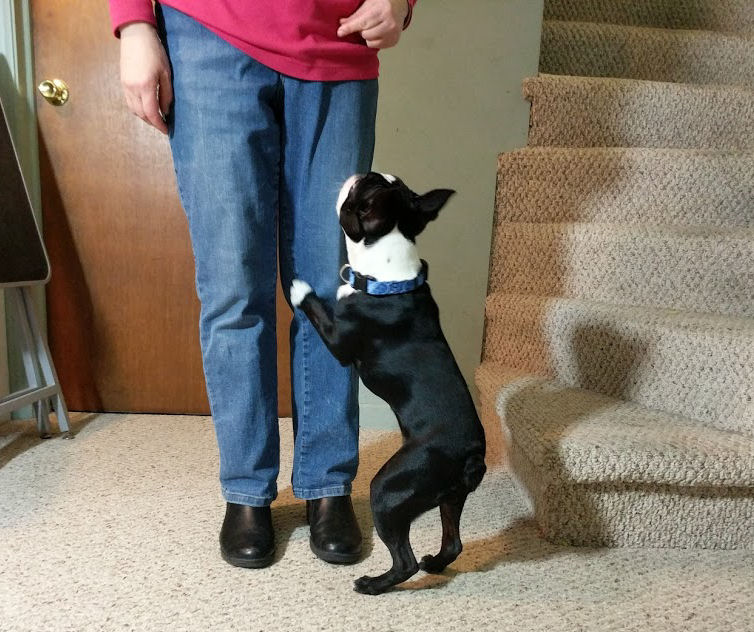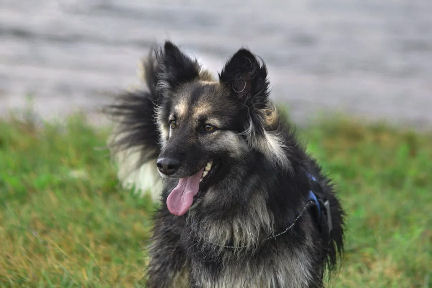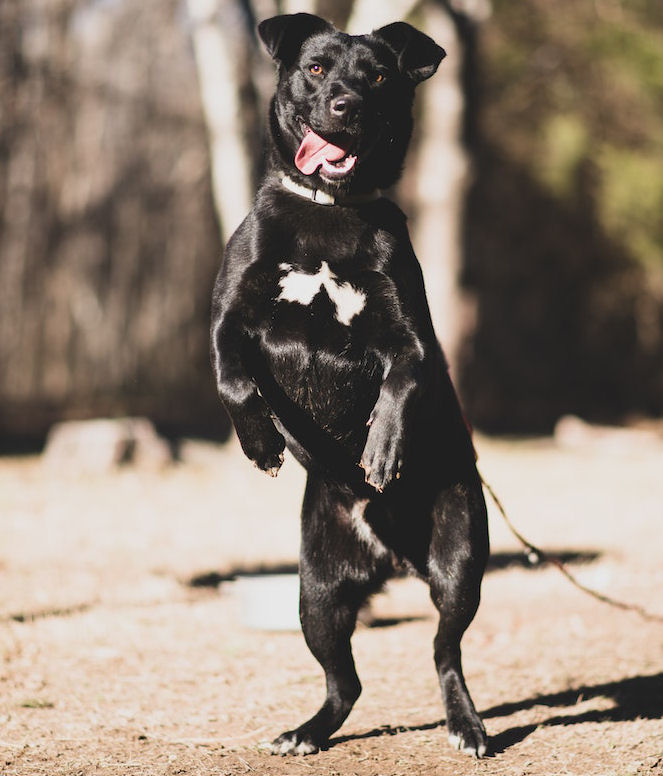There’s a person on this planet who claims an ability to “whisper” to dogs. Nonsense. This tip has nothing to do with that person’s outdated, cruel, made-for-video dog harassment. We’re sorry that a perfectly lovely, onomatopoeic word has been corrupted. Because we do, in fact, want you to whisper to your dog.
Quite serendipitously, we learned this week how useful it can be. In an otherwise horrible, terrible, very bad week (both sisters down-for-the-count with Covid), it was the brightest discovery. We had no voices, no “Mom voice,” no audible authority. So we whispered to our dogs. And they listened.
A wonderful, quiet surprise
Understand that a significant part of dog training, for us, has been about the volume. Public spaces tend to be noisy. Dog training classes always start out noisy. Dog shows are super noisy, especially if a performance event is held in conjunction with a conformation show, which is often the case. Added to the crowd sounds, dogs barking, loudspeaker announcements, catering, are blow-dryers. Not a good place to hear yourself think.
So we’ve always given our dogs short, easy-to-yell names. Our students might argue differently, but we’re not, by nature, loud people. We’ve never been “hushed” by a librarian in our lives. And we’ve spent a lot of time in libraries. It’s taken years for us to shed the polite volume of conversation for the projection teaching demands. But it’s important, so we do it.
Along the way, we may have become louder with our own dogs. Even harsh-sounding at times. Which is odd to listen to, because every time we play training games with our dogs, the overwhelming emotion is joy. This loving, lovable being wants to play with me!
So we whisper to our dogs
We’ve often said that the best part of every day is the time we get to play training games with our dogs. Those couple of minutes when you’re in sync and having fun set the whole day off right. We always say, “Tell your dog everything,” so we weren’t quite sure how it would go the day we woke up with super-low, no-volume voices. We whispered because there was nothing else to do.
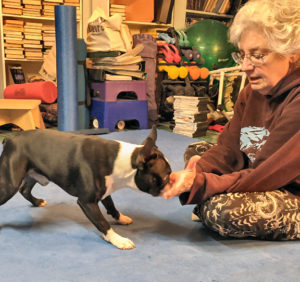
So we tried it. And the dogs loved it. They listened harder to make sure they didn’t miss anything. We even got the cutest head tilt from Booker (he’s the only one who actually does it). Their focus was intense. It was wildly successful.
That’s not to say it’s always going to work that way. Just like anything else, if you do it all the time, it’s no longer interestingly different. Then it’s just another routine. But every once in a while, it’s worth trying. Maybe if you’re having a hard time getting your dog’s attention. Or if they seem distracted or a bit “off” that day.
Old memories bring smiles
It actually reminded us of our mother. When we were growing up, she rarely, if ever yelled. Instead, if she wanted us to stop fighting, or pay attention, she whispered. We know of some parents who go so far as to just pretend they’re talking.
Try it! When you whisper to your dog, it’s a pretty effective way to get your dog (or your kids!) to be quiet and listen, instead.

